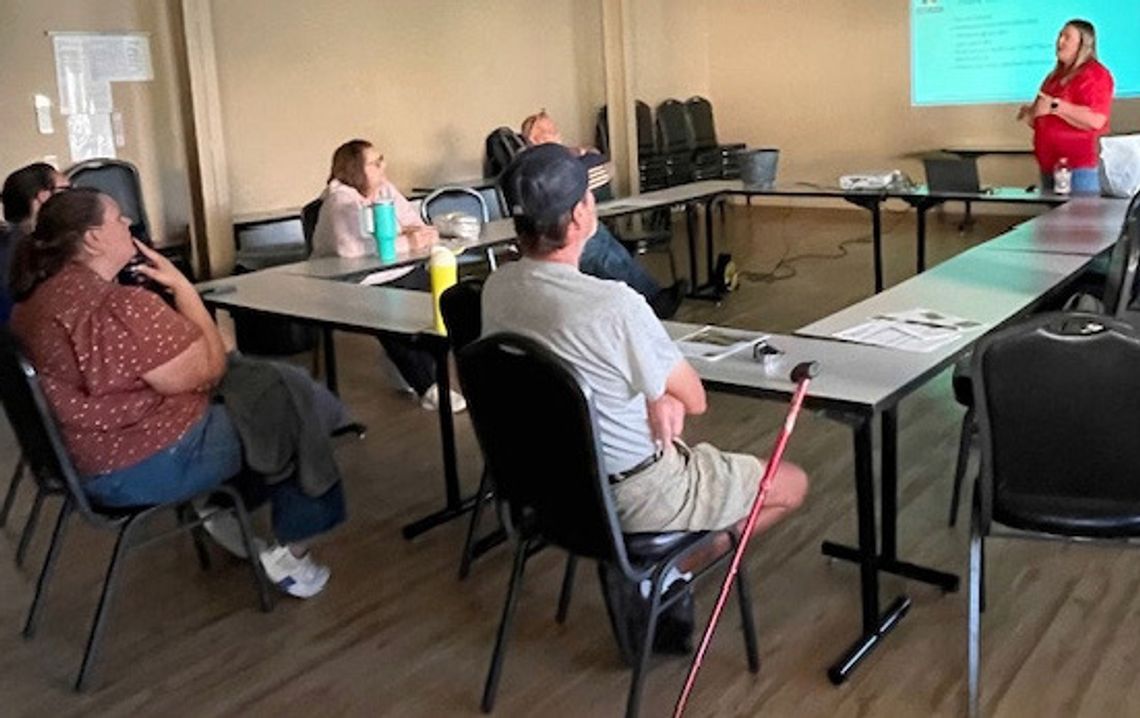Nicole Stoner, UNL extension educator, hosted a tree selection and planting workshop Thursday, Sept. 18, at Clay County Fairgrounds Activity Building in Clay Center.
Stoner, a Certified Arborist from Beatrice, provided information about tree choice and caring for trees. Stoner jumped right in providing information when to plant trees in Clay County.
DURINGTHE SPRING OR FALL?
Spring tree planting is advised to wait until after Arbor Day due to final frost date. Which is the last Friday in April for Nebraska. Fall tree planting is great in September and October.
A couple of things to keep in mind when planting trees, try to avoid summer plantings during the hottest part of the day or for the wintertime avoid when the ground is frozen. These times are not ideal for planting.
Tree choice can be a bit overwhelming but with a bit of selection guidance Stoner made it seem not as a huge task. Here is what she advised: 1. Choose a tree that is adapted to the hardiness zone, Clay County is zone 6A 2. Selecting a tree with a healthy root system. Avoid a root bound tree. Look for trees potted in a grow bag or root maker production system 3. Purchasing trees from a locally grown source. The products are usually adapted for the growing area, or the growers can suggest trees.
4. Where is the tree going to be planted or what is the maximum area that can be used for the growing tree? Keep in mind as the tree grows, overhead lines, buildings, underground lines, sidewalks etc.
5. The growing rate for some trees might be fast growers and not have a sturdy trunk for our Nebraska winds. A slow-growing tree will have a strong trunk.
6. Some trees produce large or small leaves, bark, flowers, fruit, seed pods, and brightly colored leaves in the fall or spring to keep in mind for future landscapes.
7. Research the type of tree selection, as some are susceptible to beetle invasions, diseases, or environmental issues.
8. Be sure to check the local tree or planting ordinance for your area, as it is different for various places.
9. Call Diggers hotline before digging.
Now that all the preliminary work has been completed and the tree selection made, planting is next. Remove the tree from the bag or container exposing the rootball and the lateral roots.
Dig the hole as deep as the rootball and twice as wide as the first lateral roots. The rootball should be level or just below the soil surface. Loosen the soil in the sides of the planting hole to help with root growth.
Be sure to remove all the wires, ropes, tags, or burlap the tree may be wrapped in as this stunts or stops proper growth. After the tree has been placed into the hole, backfill with the existing soil do not use potting soil or any other purchased soil.
Lightly tap the dirt around the rootball and trunk rather than a stomping/packing method. Lightly packing gives the tree roots an opportunity to expand easier.
The tree should be watered to the point of saturation after planting to provide the needed moisture. This will help settle the soil and remove air pockets. Providing one inch of water per week is recommended.
The use of a drip irrigation system, a soaker hose, or a sprinkler in the drip zone of the tree can also help with watering. If natural precipitation or snow cover is not present may need to continue to water as needed.
If temperatures are a nice 45 degrees during the winter watering is highly suggested.
Stoner talked about how tree owners feel the need to stake trees, but staking is not always necessary. If the tree is in a windy area, then staking is necessary. When staking a tree be sure to use only broad smooth materials on the tree to avoid injury.
The staking equipment needs to be loose to allow the tree wind movement and help with building root and trunk strength. Remove the stakes and staking material after one year.
Adding a layer of organic mulch around the tree helps to keep moisture, combat weeds, and mower blight. Mulch should be 2-3 inches deep and not piled up around trunk. A mesh wrap can protect the tree from rabbits or voles. A plastic tube can protect from sunscald. Remove the wraps after one winter.
Stoner shared her knowledge and her passion for trees saying, “We are planting trees for the future generations.”



